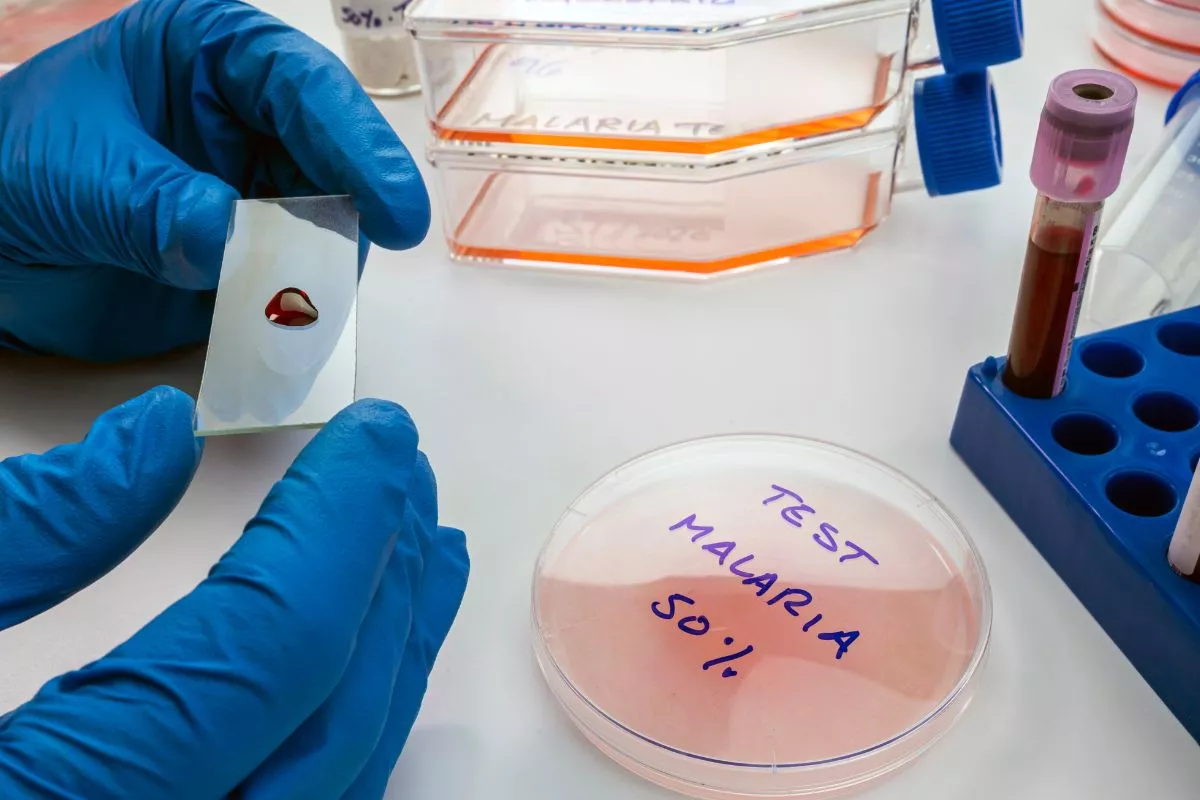A device developed by scientists makes it possible to detect malaria without a blood test.
As per the report, a University of Queensland-led team of scientists has developed a device that shines a beam of harmless infrared light on a person’s ear or finger for 5 to 10 seconds. Due to this technology malaria detection will be done fast and needle-free i.e. without a blood test.
This device collects an infrared signature that is processed by a computer algorithm. A fast way of detecting malaria.
The Traditional Ways of Diagnosing Malaria with Blood Test
Your doctor may recommend one or more diagnostic tests and procedures as part of an evaluation. Traditionally doctors recommended physical examination, symptoms, and blood tests. It can also help a doctor see what type of malaria parasite you have and how many parasites are in your blood.
Where malaria is not endemic anymore (such as in the United States), healthcare providers may not be familiar with the disease. Sometime in laboratory, the technicians due to lack of experience may fail to detect malaria parasites when examining blood smears.
Expert’s Opinion About New Malaria Diagnosing Technology
Dr. Maggy Lord from UQ’s School of Biological Sciences says that this technology would ‘revolutionize’ the prevention and cure of Malaria globally.
She further states the shortcomings faced currently to test large populations of a village or town through an individual blood test and mixing it with a reagent to get a result.
Dr. Lord Said “According to the World Health Organization malaria report, there were an estimated 241 million cases worldwide and more than 600,000 died from malaria”.
“The biggest challenge in eliminating the disease is the presence of asymptomatic people in a population who act as a reservoir for transmission by mosquitos. We hope the tool could be used at ports of entry to screen travelLers, minimizing the re-introduction of diseases and reducing global outbreaks”
Now, with this new technique as per experts at UQ’s School of Biological Sciences the detection of not just individuals but a community, town, or village as a whole can be diagnosed easily and on time.
Further, this technique has other benefits such as the needle-free and chemical-free detection in just a flash on the skin. Which makes it harmless, less scary, and widely useful technique to detect malaria without a blood test.
In Brazil, the Instituto Oswaldo Cruz and the University of Queensland collaborated and applied the tool to detect malaria in patients from the Amazon region.
This was led by Dr Rafael Maciel de Freitas and the work was funded by Fiocruz INOVA Ideias Inovadoras, Conselho Nacional de Pesquisa e Desenvolvimento Científico e Tecnológico, Fundação Carlos Chagas Filho de Amparo a Pesquisa do Estado do Rio de Janeiro and advanced by Queensland Industry Research Fellowship and the National Health and Medical Research Council as per the report.
All this points to the importance of technology and technological developments. Such devices can globally help avoid many serious health conditions and will prove to be a necessity in times of epidemics and pandemics.
More and more efforts should be taken by government to support such health care and welfare facilities and their development at a very proactive rate.
